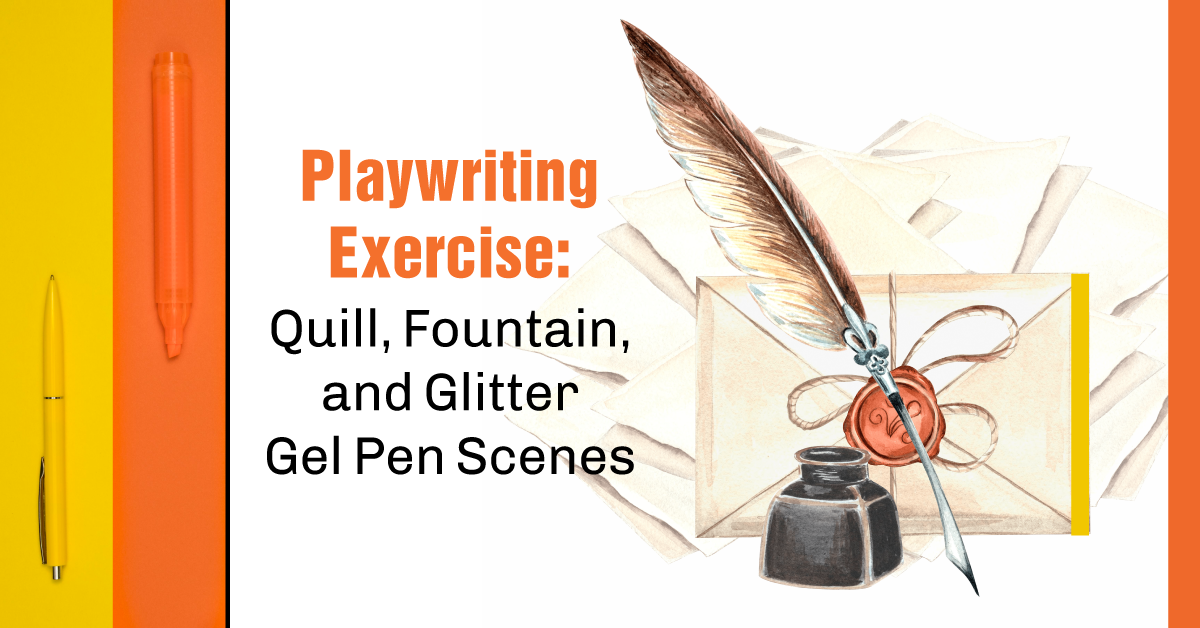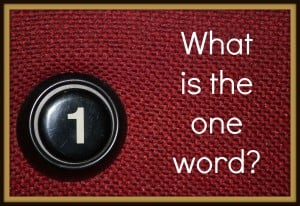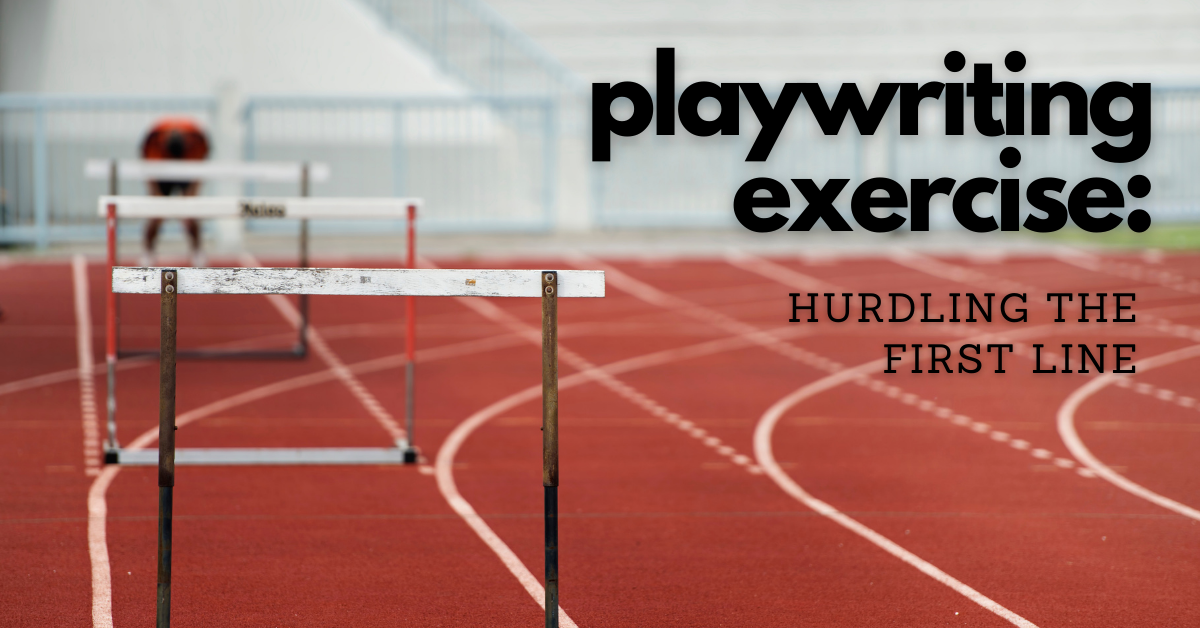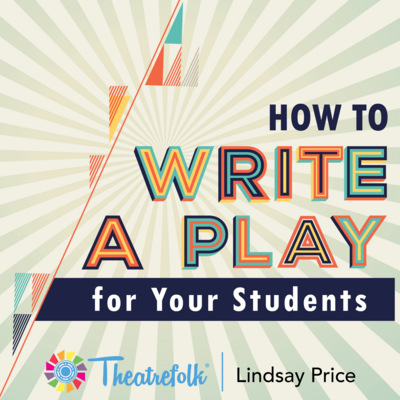Playwriting Exercise: Quill, Fountain, and Glitter Gel Pen Scenes
Taylor Swift famously described categorizing her songs as having "fountain pen," "quill pen," or "glitter gel pen" lyrics, referring to how the songs were written and the feelings they were meant to evoke. According to Taylor, fountain pen songs are modern, emotional, and deeply personal. Quill pen songs are old-fashioned-sounding, historical, and finely detailed. Glitter gel pen songs are upbeat, light, and youthful. Her songs are always written and performed in her unique voice, but the tone, structure, and artistic approach are different. It makes for an interesting writing challenge, but also creates a sense of variety and fun from song to song.
Let's take that concept and apply it to writing a scene for performance. In this exercise, students will come up with a premise featuring one or two characters, to be the basis of a short scene or monologue. The scene or monologue will be between half a page to one page in length. Students will write the scene three different ways, using Taylor’s three song categories as the basis for tone, style, and word choice.
Start by coming up with a premise for the scene. Some ideas might be:
- Someone preparing a favourite meal
- Someone cleaning their room and finding a long-lost item
- A parent and child going shopping for a particular item
- A baseball player about to go up to bat
- Someone sharing a secret with a friend
Create a brief outline for the scene, decide on the name(s) of the character(s), and note any pertinent personality traits or necessary details. The outline can be as simple as “Susan (parent) and Demi (child, age 13) need to get a new pair of pants for Demi.”
Then, students will write the scene three different ways: fountain pen style, quill pen style, and glitter gel pen style. As a reminder: fountain pen songs are modern, emotional, and personal; quill pen songs are old fashioned, historical, and detailed; and glitter gel pen songs are upbeat, light, and youthful. So for example, in the scene about the clothing store, in a fountain pen scene, Susan and Demi might disagree about what pants to get, and Demi has a monologue about how their parent doesn’t understand how the pants they want to wear represent their personality and how they’re viewed in the world. In the quill pen scene, Susan and Demi might have to purchase the materials and notions and sew the pants themselves, and have deep conversations while they work together to make the pants for Demi. In the glitter gel pen scene, Demi might break into song about all the different pants and how surprised they are to discover that they’re actually having fun with Susan, trying on the pants. In all three scenes, Demi is getting a pair of pants, but each scene is totally different in tone and structure.
Now you may have students saying, “Three different ways? I can barely write a scene one way!” Not to worry, we have lots of ways to help students figure out how to approach the different styles of writing. Have students consider the following when they’re planning their writing:
- Perspective: Think of writing from the perspective of an adult, an elderly person, or a child.
- Time period: Write from the time of the present, the past, or the future.
- Slang words or phrases: How would words like rizz, groovy, awesome, balderdash, or forsooth affect the scene?
- Cultural references: Do the characters communicate using telephones, letters, or social media? Are they fans of lute music, The Who, or robo-trance music of the year 2347?
- Amount of words used: “Why yes, of course mother” has a much different tone than “Yeah ma,” as does “Alas, I wish to possess that item” versus “I want that.”
- Contractions: “Do not” versus “don't” sounds very different.
- Types of words used: Think about simple words and phrasing versus complex language, and who is using the words. For example, a five year old wouldn't likely use the word "conversely" when they’re talking.
- Amount of details you include, and which details.
- Style of scene: dramatic, comedic, historical, musical…
Once students have completed their writing, have them read their scenes aloud to a partner or small group (or have other group members read the scenes aloud to them). Listen for things like consistent details, tone differences, anachronisms, and whether or not the scenes flow well. If any edits or revisions are needed, students should make those changes, then submit their three scenes to the teacher.
Alternate Exercise: If students are overwhelmed by the thought of writing one story three different ways, have them work in groups of three. The groups will come up with one scene premise, and each student in the group will write the scene in one of the three styles (fountain pen, quill pen, or glitter gel pen style). Groups must ensure that the details of all the scenes are consistent between group members; only the style of writing will change. Groups will submit all three scenes together as a package.
81 Playwriting Exercises
by Lindsay Price
81 exercises that can be used to get students in the habit of writing on a regular basis.
How to Write a Play for your Students
by Lindsay Price
You’ve chosen to write a play for your students! Where do you start?
Resource Bundle - Playwriting
Use these 4 Playwriting drama teaching resources to make playwriting possible with your students. Great for warm-ups, prompts, writer's block and more!
Scenes for Classroom Study
by Lindsay Price
Scenes for Classroom Study consists of scenes from published Theatrefolk plays and is designed to help with character study, scene work, substitute teachers, performance, Individual Event competitions and so much more.
Ensemble Scene Collection
by Lindsay Price
Looking for quality scenes for your ensemble that haven't been done a million times? This Ensemble Scene Collection contains 33 scenes from published plays - great for competition and classwork!








